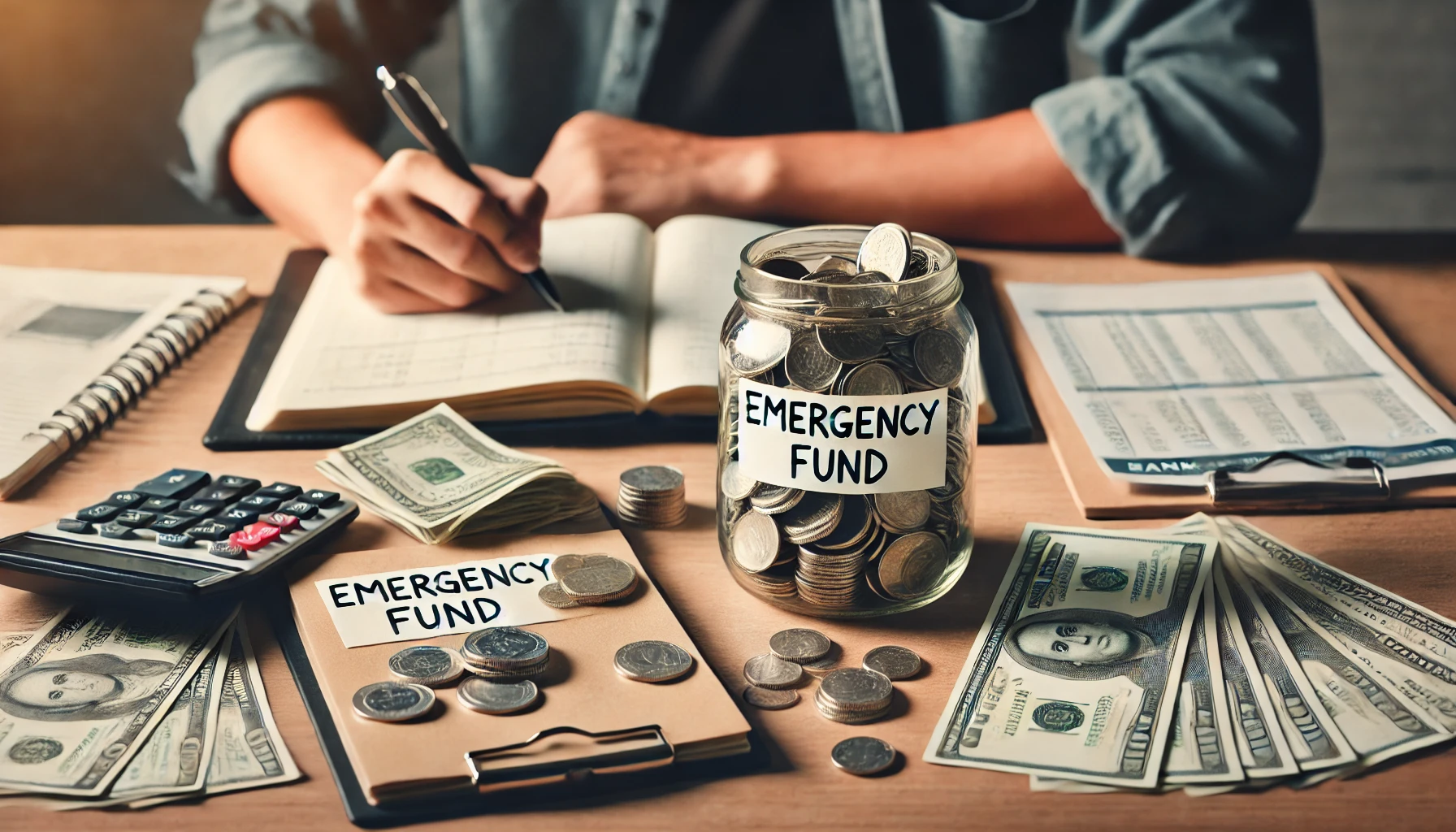An emergency fund is your financial safety net, protecting you from unexpected expenses like medical bills, car repairs, or job loss. Without one, you may have to rely on credit cards or loans, which can lead to debt.
In this guide, you’ll learn how to build an emergency fund step by step, no matter your income level.
1. Understand Why an Emergency Fund is Essential
Life is unpredictable, and emergencies happen when we least expect them. An emergency fund helps you handle these situations without financial stress.
Why You Need One:
✔ Avoid Debt – You won’t need to rely on credit cards or loans.
✔ Financial Security – Helps cover unexpected expenses like medical bills.
✔ Peace of Mind – Reduces anxiety about sudden financial problems.
✅ A well-funded emergency account can prevent financial crises.
2. Determine How Much You Need
How much should you save? It depends on your lifestyle and financial situation.
Emergency Fund Goals:
✔ Starter Fund: $500 – $1,000 (for small unexpected expenses).
✔ Basic Fund: 3 months of essential expenses (for temporary financial difficulties).
✔ Full Fund: 6+ months of expenses (for long-term security, job loss, or major emergencies).
How to Calculate Your Target Fund:
1️⃣ Add up your essential monthly expenses: rent/mortgage, utilities, groceries, transportation, and insurance.
2️⃣ Multiply by 3 to 6 months to determine your goal.
For example, if your basic expenses are $2,000 per month, a 3-month emergency fund would be $6,000.
3. Open a Dedicated Emergency Savings Account
Your emergency fund should be separate from your everyday spending money to avoid temptation.
Best Places to Keep Your Emergency Fund:
✔ High-Yield Savings Account – Earns interest while keeping funds accessible.
✔ Money Market Account – Offers better interest rates with some withdrawal flexibility.
✔ Traditional Savings Account – Safe, but lower interest rates.
🚫 Avoid keeping emergency savings in a checking account – It’s too easy to spend.
✅ A separate account helps keep your emergency fund safe and growing.
4. Set a Monthly Savings Goal
Consistency is key! Even small contributions add up over time.
How to Save for Your Emergency Fund:
✔ Set Automatic Transfers – Transfer money to your savings account every payday.
✔ Start Small and Increase Gradually – Even saving $10–$50 per week adds up.
✔ Use Windfalls Wisely – Bonuses, tax refunds, or extra income should go to savings.
📌 Example Plan:
- Save $20 per week → $1,040 per year
- Save $50 per week → $2,600 per year
- Save $100 per week → $5,200 per year
✅ A consistent savings habit makes building an emergency fund easier.
5. Cut Expenses to Boost Savings
If saving feels difficult, look for ways to free up extra cash.
Ways to Reduce Expenses:
✔ Cancel Unused Subscriptions – Streaming services, gym memberships.
✔ Cook at Home – Eating out less saves hundreds per month.
✔ Use Public Transport or Carpool – Lower gas and maintenance costs.
✔ Shop Smart – Buy in bulk, use coupons, and compare prices.
Even small adjustments can free up extra money for your emergency fund.
6. Find Ways to Earn Extra Income
If your budget is tight, earning extra money can help you reach your savings goal faster.
Easy Side Hustles:
✔ Freelancing – Writing, graphic design, tutoring, virtual assistance.
✔ Selling Unused Items – Clothes, furniture, electronics.
✔ Part-Time Work – Retail, food delivery, babysitting.
✔ Online Gigs – Surveys, testing websites, data entry.
✅ Every extra dollar you earn can go directly into your emergency fund.
7. Only Use Your Emergency Fund for Real Emergencies
Your emergency fund is not for vacations, shopping, or non-urgent purchases.
True Emergencies Include:
✔ Medical Expenses – Unexpected doctor or hospital bills.
✔ Car Repairs – Necessary repairs to keep your car running.
✔ Job Loss – Covering essential bills until you find new work.
🚫 Not for: Shopping, upgrading electronics, dining out, or vacations.
✅ Using your emergency fund wisely ensures it’s available when truly needed.
8. Replenish the Fund If You Use It
If you ever need to withdraw from your emergency fund, prioritize rebuilding it.
✔ Resume automatic transfers – Go back to saving a fixed amount each month.
✔ Adjust your budget – Reduce expenses temporarily to restore savings.
✔ Put windfalls into savings – Tax refunds, bonuses, and extra income can help rebuild it quickly.
✅ Always maintain a strong emergency fund for financial security.
Final Thoughts: Start Building Your Emergency Fund Today
An emergency fund is one of the most important financial tools for stability and peace of mind. Here’s a quick recap:
✅ Understand why an emergency fund is crucial
✅ Set a realistic savings goal (3–6 months of expenses)
✅ Open a separate savings account for emergencies
✅ Save consistently with automatic transfers
✅ Cut unnecessary expenses to save faster
✅ Find ways to earn extra money
✅ Use it only for real emergencies
✅ Replenish it if you withdraw money
Start today! Even small savings add up and bring financial peace of mind. 🚀
